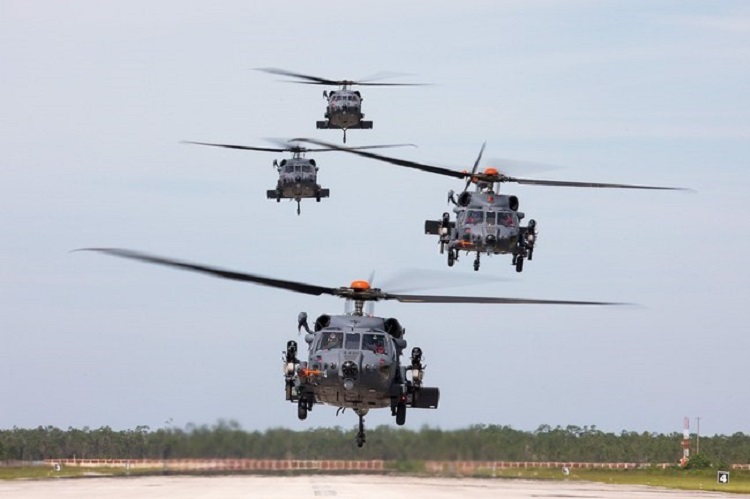On February 1, Falls Church, VA-based Northrop Grumman Corporation announced has been awarded a contract from the Defense Advanced Research Projects Agency’s (DARPA) Perceptually-enabled Task Guidance (PTG) program to develop a prototype artificial intelligence (AI) assistant. The prototype will be embedded in an augmented reality (AR) headset to help rotary pilots perform expected and unexpected tasks.
Northrop Grumman’s prototype AI assistant will help rotary pilots perform expected and unexpected tasks such as augmenting the crew’s response to an engine fire in this example.
Northrop Grumman, in partnership with the University of Central Florida (UCF), will develop an Operator and Context Adaptive Reasoning Intuitive Assistant (OCARINA) that will support UH-60 Blackhawk pilots, who fly with both visual and instrumented flight, which varies with weather, time of day and other environmental factors.
“The goal of this prototype is to broaden a pilot’s skillset,” said Erin Cherry, senior autonomy program manager, Northrop Grumman. “It will help teach new tasks, aide in the recognition and reduction of errors, improve task completion time, and most importantly, help to prevent catastrophic events.”
Rotorcraft aircrews face numerous demands particularly when flying in close proximity to buildings, terrain, people and from the threat of adversary RADAR systems. Today, simple warning systems are the most common means for aiding a rotorcraft aircrew, such as auditory alerts to increase altitude. These warning systems are limiting and can induce unanticipated cognitive burdens on pilots. Studies have shown that inattentional blindness to such warnings can occur, often making them ineffective for the aircrew.
DARPA’s PTG program aims to develop AI technologies to help users perform complex mental and physical tasks. The goal is to provide users of PTG AI assistants with wearable sensors that allow the assistant to observe what the user perceives and know what the user knows. Using advanced information processing and an AR interface, the goal of the program is to have the AI assistant provide feedback and guidance through speech and aligned graphics at the right place and time to augment the aircrew.
Source: Northrop Grumman
If you enjoyed this article, please consider becoming a paid subscriber. Your support helps keep our site ad-free.









